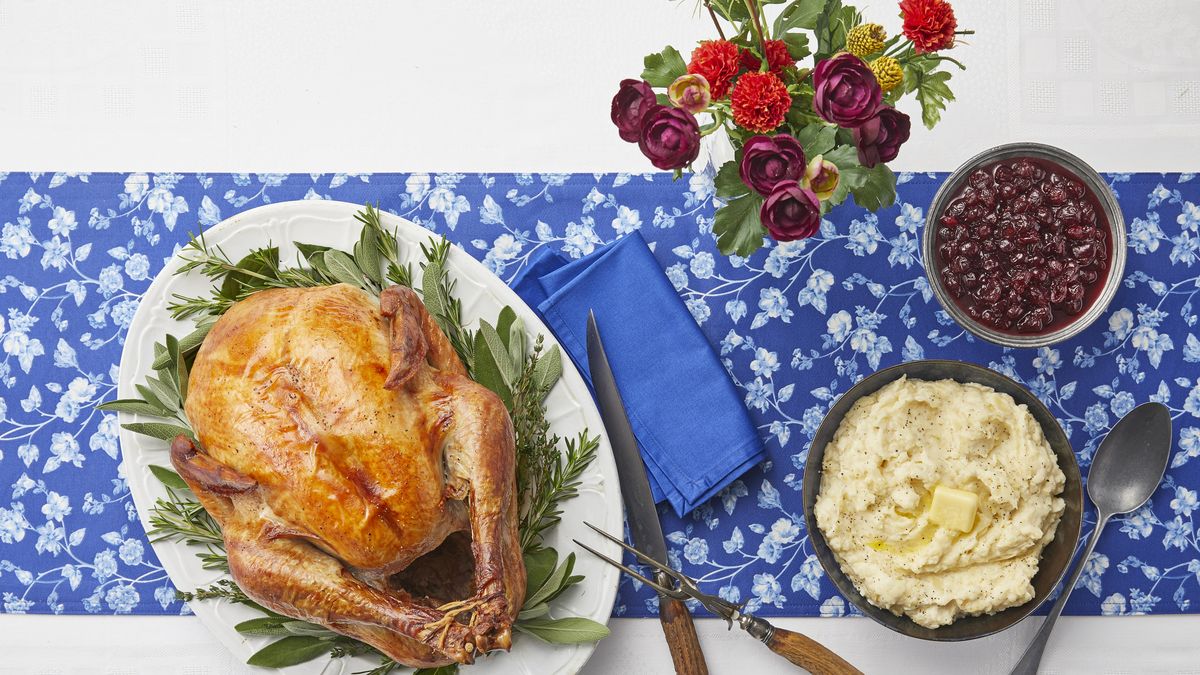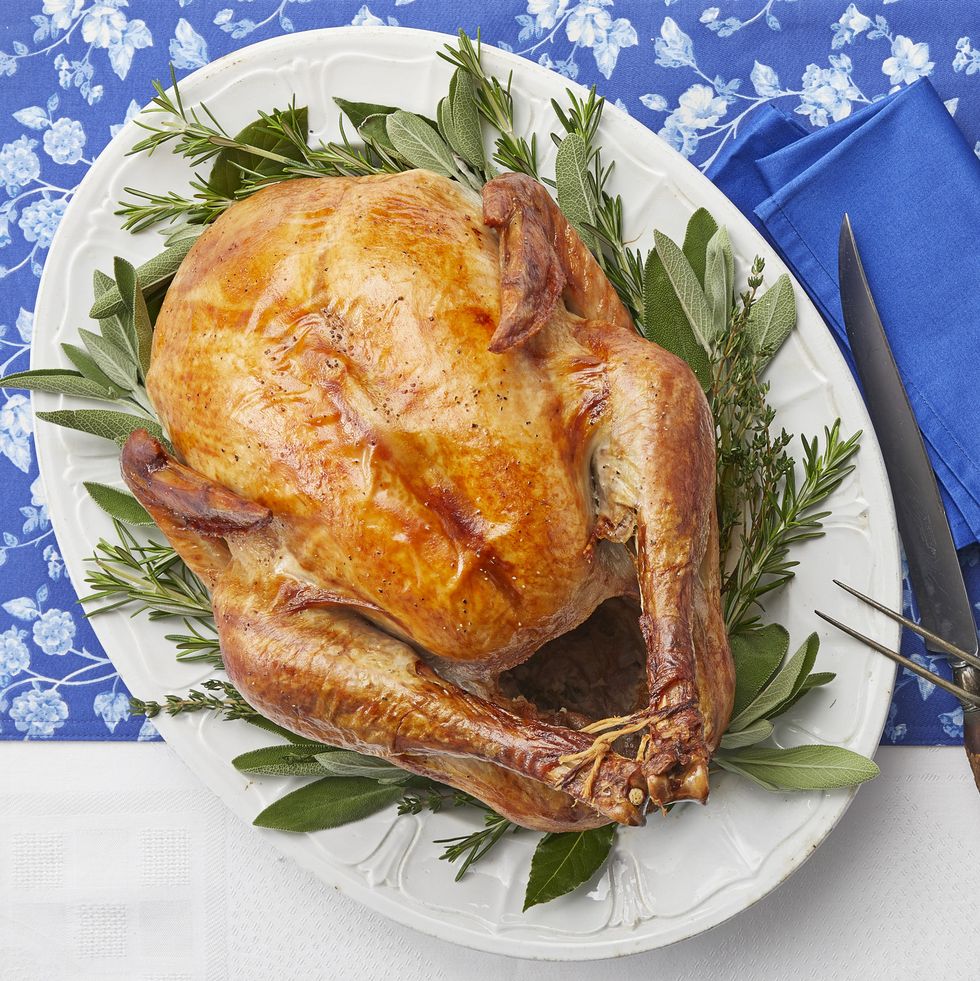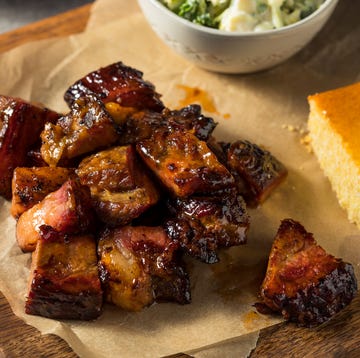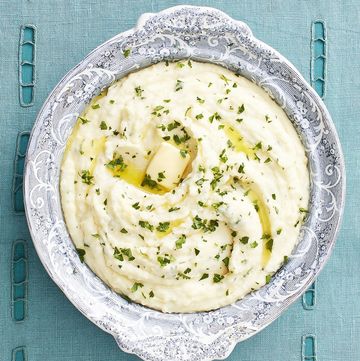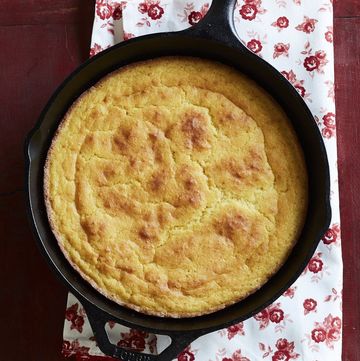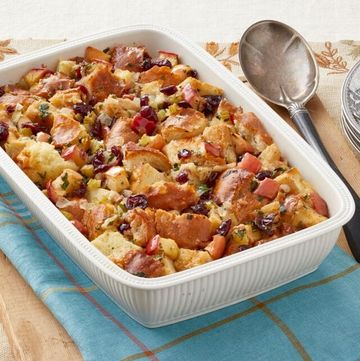After hours spent roasting in the oven, there's nothing worse than taste-testing that first bite of turkey only to find out it tastes like, well... nothing. But it doesn't always have to be that way! In fact, there are plenty of turkey seasoning tips to make your bird the shining main dish—you just have to know how to season a turkey.
To start, your Thanksgiving menu will benefit from a really tasty turkey recipe. Whether you're roasting, deep frying, or even spatchcocking, there are so many variations on Thanksgiving turkey. But before you stick it in the oven, turkey fryer, or air fryer (hello, air fryer turkey breast!), read on for our top tips on seasoning a turkey.
There are several ways you can bring big flavor to this year's holiday bird. You can let your turkey absorb the flavors of Ree Drummond's favorite brine. You can also give your bird a good rub down with a compound butter or coat it in an easy spice blend—even just salt and pepper can work wonders! Keep reading to learn how to use ingredients like fresh herbs, citrus, and aromatics to up your turkey game. P.S. Once you've got a plan of action for seasoning, find out how much turkey per person to prepare for this year's feast.
Should I season my turkey before cooking?
Yes, yes, YES! It doesn't so much matter when you season your bird—whether it's just before popping it in the oven or several days in advance for a dry-brine technique—as long as you season it before it gets cooked. This is essential for the butter, herbs, and whatever other seasonings you use, to flavor the skin and meat of the turkey.
How do you season a turkey?
You don't have to concoct any complicated spice blends to make a great-tasting turkey. Simple seasonings go along way, but before you go to town with kosher salt and freshly cracked black pepper, be sure to pat the turkey completely dry with paper towels—this helps crisp up the skin. Once the bird is as dry as possible, season away! Stick with salt and pepper, put herbs like rosemary, thyme, and sage to work, or take spicy Cajun seasoning for a spin for some kick. Whatever blend you choose, spread it all over the turkey—on top, underneath, between the body and wings and legs, under the skin, and even in the cavity of the bird. If you plan on brining your turkey, skip seasoning the bird with any more salt. It'll absorb plenty from the brine! But feel free to rub on pepper or any other spices.
How do you season turkey breast?
Just like with a whole bird, a turkey breast can be brined or dry-brined before cooking. If you're looking for a quicker solution, simply rub the turkey breast with olive oil, salt, pepper, and a fresh herb butter—it's perfect for a Thanksgiving dinner for two. When shopping, look for bone-in and skin-on turkey breast. It'll have the best flavor!
How do you add flavor to a turkey?
The possibilities are endless: You can add flavor to a turkey via marinade, flavor injector, rubs, compound butters, basting, and glazing—take your pick!
Marinating a big bird the traditional way can be tricky—you'd need quite a bit of liquid to submerge it. Instead, slather your turkey with a paste-like marinade and refrigerate it for a few hours. You can also use flavor injectors to inject a marinade or other flavorful solution deep into the flesh of the turkey—just make sure the liquid is pureed or finely ground enough for seamless injections. If using an injector, you don't need to plan on any additional time for the liquid to permeate the turkey flesh (like you would with a marinade).
Other flavoring agents like a spice rub or compound butter can be applied directly to the turkey. Rub a spice blend all over the skin and sprinkle it in the cavity. A compound butter can be tucked underneath the skin or spread on top. Ree uses a rosemary-orange butter to flavor her roasted Thanksgiving turkey.
Another (super simple!) way to add flavor to a turkey is to add aromatics to the cavity or roasting pan. Try fresh herbs, citrus halves, onions, shallots or garlic—they'll lightly infuse the meat and pan drippings with flavor. And flavorful drippings lead to flavorful giblet gravy!
You can also baste the turkey with its own pan juices or brush on a glaze for a golden finish. Just be sure to give the turkey time to cook a few minutes longer after the final application—this allows for the liquid to cook off and the skin to become crispy.
